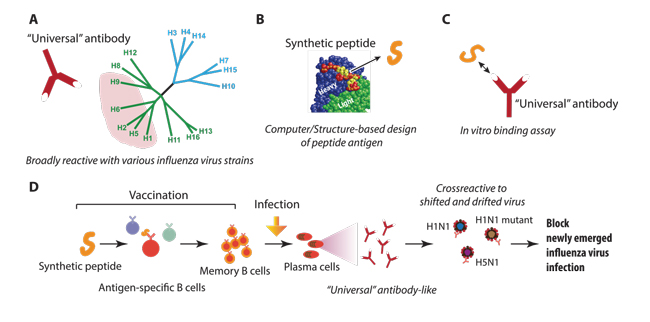Influenza Project
Core for Homeostatic Regulation
Influenza is a major life-threatening infectious disease in our society. Although the current vaccination method effectively reduces the risk of death, the following issues still remain.
1. What are the host factors that contribute to pathogenesis
during the acute phase of infection?
Pathogenesis developed during infection varies among individuals.
Several reports have suggested that dysregulation of immune
responses might contribute to the pathogenesis. To understand the
contribution of immune responses to pathogenesis, IMS has taken a
systems biological approach. Gene expression profiles of subsets of
tissue-invaded immune cells over time after infection are generated
and analyzed.With this large dataset, IMS expects to identify new biomarkers,
especially to predict the risk of death. The new biomarkers
should enable us to prevent deaths from influenza by combining
them with existing drugs.
2. Generating a next-generation vaccine against a broad range
of influenza viruses.
Several groups have succeeded in isolating human and rodent antibodies
that are broadly reactive with various influenza virus strains
such as H1N1 and H5N1, findings that point to the feasibility of
developing a universal vaccine. These antibodies mostly recognize
the stem region of the Hemagglutinin (HA) protein, a region that
is well-conserved at the amino acid sequence level. In the IMS influenza project, they are designing
synthetic peptides to induce B cell antibody responses that can
broadly neutralize influenza virus infections. Three teams from the
research fields of immunology/biochemistry, computer science and
structural biology are running this project, which aims to generate
a next-generation vaccine for any upcoming pandemics resulting
from antigenic shift and drift (Figure).

Figure: Crafting a universal vaccine for pandemic
Influenza
A) Cross-reactivity of a "Universal" antibody. B) Numerous
influenza peptides are designed and their affinities
for "universal" antibody are predicted in silico. C) Selected
peptides are subjected to biochemical binding
analyses using the universal antibody. D) Potential peptides
for the vaccine will be evaluated for their ability
to generate "universal" antibody in vivo and to protect
animals, and ultimately humans, from infection with
various influenza virus strains.


